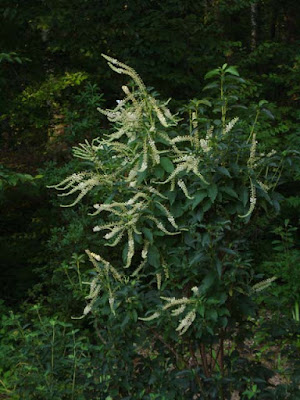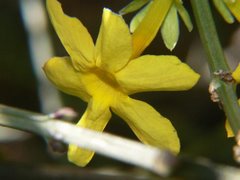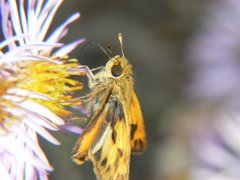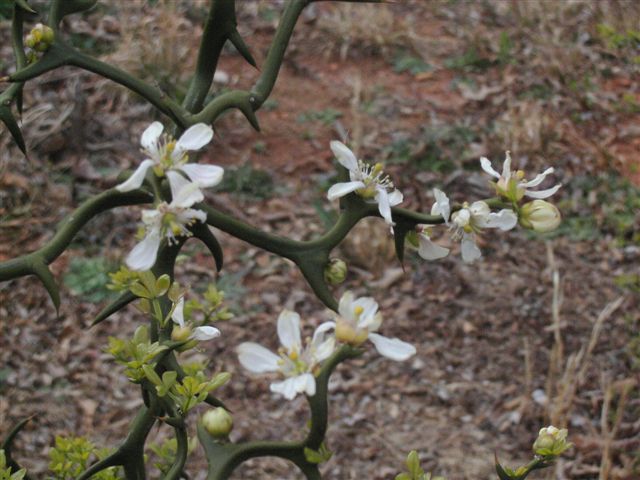Japanese Clethra (Clethra barbinervis) has something to offer gardeners in every season. In spring and summer it has attractive, dark green foliage that's not subject to significant damage from insects or diseases. During the summer it adds showy, fragrant, white flowers. In autumn the leaves change to striking shades of orange and red, and after they drop the handsome, smooth, exfoliating bark and a nicely stratified branching pattern are revealed and may be enjoyed all winter.
It's another plant that I'd expect to see everywhere, but the only place I've observed any, other than my own garden, is at Sarah P. Duke Gardens in Durham, North Carolina, where there's a nice grove of them. Here in Raleigh we're towards the southern limit of where it can be successfully cultivated, so it must be sited carefully in moist, well drained soil in partial sun because it will not tolerate any combination of hot sun and dry soil in our climate.

Notice in the photo below that the flowers are all clustered at the top of the plant. This was caused by the April freeze that damaged this plant and others in the garden. The plant pictured lost nearly all of the new leaves and shoots on its lower two-thirds, and along with them the tissues that would have become this summer's flowers. Although the natural form of Clethra barbinervis is a large shrub, it can be pruned to become a small tree, revealing its handsome bark in all seasons. Each year it will grow a few new suckers low on its trunk, but they're easily removed and not much of a maintenance problem.

Clethra barbinervis is not the only Clethra growing in the garden. Its North American counterpart is probably Cinnamonbark Clethra (Clethra acuminata), also a desirable plant, but that's not in the garden, at least not yet. The other Clethra in the garden is the native Summersweet Clethra (Clethra alnifolia), whose common name refers to its summertime blooming of sweetly fragrant flowers. The most common flower color for this species is white, but the form I have pictured is an attractive pink flowered selection named 'Ruby Spice'.

Notice that this plant is covered with flowers from top to bottom. Because Clethra alnifolia is one of the last deciduous plants to leaf out in the spring it completely missed this year's April freeze. Like Clethra barbinervis, best growth of Clethra alnifolia occurs on moist soils. It can take full sun as long as the soil isn't too dry and even thrives in wet soils that would rot the root systems of many plants. In contrast to Clethra barbinervis, Clethra alnifolia doesn't have particularly interesting bark and can't easily be pruned into a small tree. In addition to growing shoots on its lower trunk, it also grows them from its entire root system and without maintenance it will soon colonize an area. It's not that aggressive so this usually isn't a problem, but a gardener considering using it should be aware of this habit.





No comments:
Post a Comment